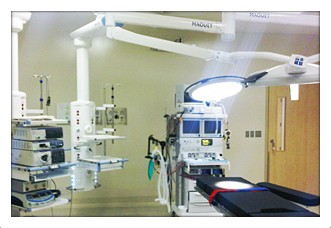No products in the cart.
Ophthalmology at Cornwall Community Hospital Looking Better Than Ever
 February 18th, Cornwall – Seeing is believing. The six new operating rooms at Cornwall Community Hospital (CCH), which opened in April 2013, offer a wide range of procedures using the latest, cutting-edge surgical equipment. One specialty area that is excelling in this new space is ophthalmology. “The equipment and OR space at Cornwall Community Hospital are appealing to any surgeon, Dr. Youssef and I feel proud to serve this community and feel lucky to have the best equipment to do surgery,” exclaims Dr. Christine Seuss, Chief of the Ophthalmology department at CCH.
February 18th, Cornwall – Seeing is believing. The six new operating rooms at Cornwall Community Hospital (CCH), which opened in April 2013, offer a wide range of procedures using the latest, cutting-edge surgical equipment. One specialty area that is excelling in this new space is ophthalmology. “The equipment and OR space at Cornwall Community Hospital are appealing to any surgeon, Dr. Youssef and I feel proud to serve this community and feel lucky to have the best equipment to do surgery,” exclaims Dr. Christine Seuss, Chief of the Ophthalmology department at CCH.
Cataracts are the most common ophthalmology procedure at CCH, averaging over 100 per month. “We have improved access to the service significantly with a 49 per cent reduction in wait times for cataract surgery from 2012 to 2013,” explains Jeanette Despatie, Chief Executive Officer. Once the patient gets referred to an ophthalmologist, their consult visit consists of a lens power measurement (which determines the strength of the lens inserted) along with all details regarding the surgery. On the day of surgery, the patient arrives two hours prior. Surgical time is approximately 10-15 minutes per eye and many choose to have both completed on that day. 9 out of 10 patients are waiting 65 days for cataract surgery at CCH while provincially 9 of 10 people are waiting 135 days for cataract surgery, that’s a shorter wait time of 70 days.
To perform cataract surgery, an operating microscope and phacoemulsifier is required, this equipment at CCH is top of the line. A phacoemulsifier is a sophisticated machine that sends ultrasonic vibrations to a tiny probe that has been inserted through an incision into the cloudy lens that constitutes the cataract. Vibrating at about 40,000 cycles per second, this probe emulsifies, or breaks up, the cataract into pieces so small that they can be vacuumed from the lens capsule of the eye. The phaco machine also provides the suction necessary to remove these particles and at the same time, introducing an irrigation solution that maintains pressure and prevents the eye from collapsing.
In the past, patients had to wear thick glasses to correct their vision after surgery. Now, artificial intraocular lenses ( I.O.L.s) replace the eye’s natural lens that is removed during cataract surgery. IOLs can also be used to solve vision problems such as astigmatism, depth perception, and improve night vision reading. After cataract surgery is complete, the patient is seen later that day or the next day to verify eye pressure and visual acuity, another follow up appointment is scheduled a week after.
Cataract surgery is common, but can still carry certain risks. The average complication rate is around 2 to 5 per cent and Dr. Yousseff’s personal complication rate is 0.2 per cent. “Many surgeons operate on one eye at a time to repair cataracts, but I often operate on both eyes at the same time, which reduces the number of visits and recovery time, “explains Dr Youssef.






